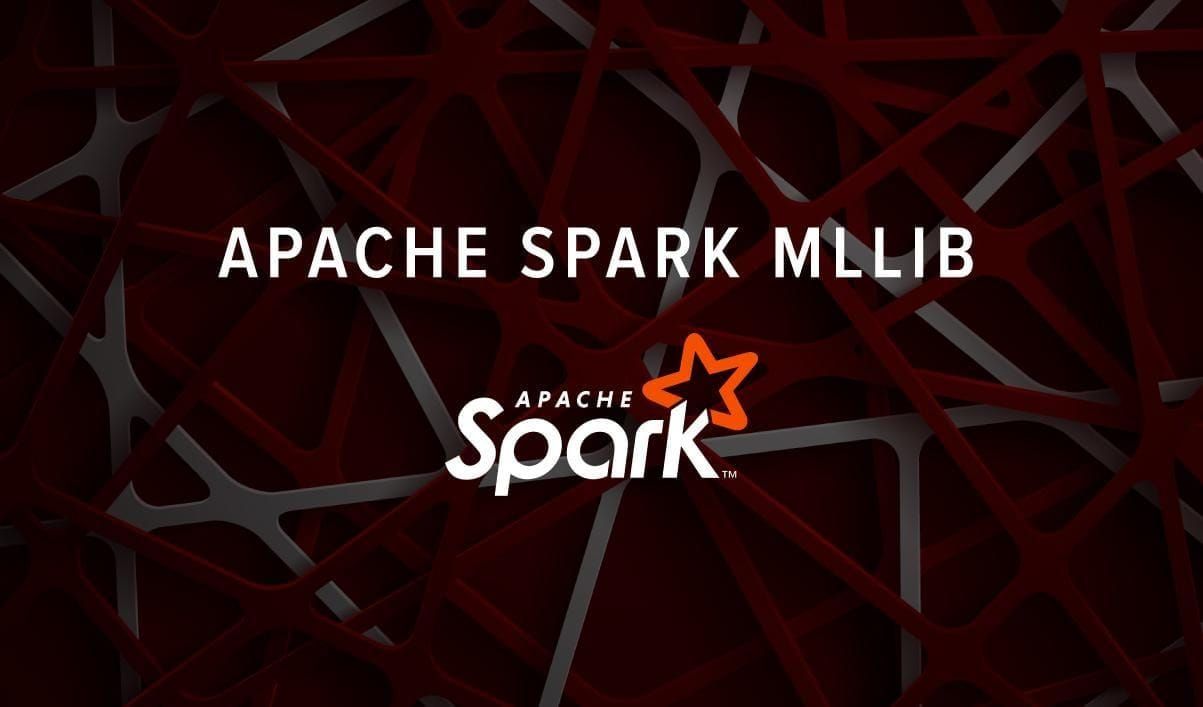When you choose a machine learning tool, you choose your future. We all know how quickly everything changes in the world of artificial intelligence, so it is important to keep the balance between “old dog, old tricks” and “just made it yesterday”.
In this post, we are going to have a look at 18 popular machine learning tools. This review will cover ML platforms, frameworks, and ML libraries.
Top machine learning frameworks, libraries and platforms
.jpg)
First, we are going to talk about platforms. They are built on a single channel architecture and designed in a way that it is convenient to program tasks. They may offer other services like work in the cloud, collaborative working options, or graphic processors for data visualization. They also use popular frameworks by Google, Microsoft, or Amazon.
Then, we will have a look at the frameworks to use when developing an ML application.
Machine learning platforms
If you are starting to work with ML, a platform with ready-made datasets and standard model templates will allow you to create your first solutions quicker and with fewer bugs. These platforms install all the necessary tools to let you start working in no time.
1. AI Platform and Datasets on Google Cloud
The fundamental problem of any ML model is that you need a correct dataset to train it. They are expensive to make and take lots of time. Google Cloud Public Datasets are datasets curated by Google that are regularly updated. The formats are very different: from images to audio, video, and texts. The data is intended for a wide range of researchers with different use cases.
In addition, Google offers other useful services that you could find interesting:
- AI platform for training and managing ML models;
- Natural language processing services;
- Vision AI (models for computer vision);
- Speech synthesis software in more than 30 languages etc.
Google is known for their expertise in AI, so you can feel confident about using their solutions for your own projects.
2. Amazon Web Services
.jpg)
AWS is a platform that provides artificial intelligence and machine learning services to developers. It is possible to choose one of the pre-trained AI services to work with computer vision, language recognition, speech generation, build recommender system and prediction models.
Using Amazon SageMaker, you can quickly create, train, and deploy scalable machine learning models, or create custom models that support all the popular open-source ML platforms.
You can also use Amazon’s services to provide new functionality to existing business solutions. They can be easily integrated with different software, for example, to modernize the contact center and increase customer retention. AWS can help achieve higher customer satisfaction and expand the standard set of business tools.
3. Microsoft Azure
Azure Machine Learning Studio allows developers who don’t have experience in machine learning to use the drag-and-drop functionality. This platform allows you to build solutions directly “on the cloud” and easily create BI applications regardless of the quality of the data.
Microsoft also offers Cortana Intelligence, a tool that allows you to fully manage big data and analytics and transform data into meaningful information and subsequent actions.
Overall, Azure can be used by teams and large organizations to work on ML solutions together in the cloud. It has a wide set of tools for different purposes, which makes it so loved by international corporations.
4. RapidMiner
RapidMiner is a platform for data science and machine learning. It has a convenient graphical interface and allows to process data from a variety of different formats, including .csv, .txt, .xls, .pdf. Due to this ease of use and respect for privacy, Rapid Miner is used by thousands of enterprises around the world.
This tool is good when you need to build automated models quickly. It will help you to automatically analyze data and identify common quality problems with correlations, missing values, and stability. However, in order to solve more complex research problems, it is better to use other tools.
5. IBM Watson
.jpg)
If you’re looking for a fully-functional platform with a number of tools for both research teams and enterprises, check out the Watson platform by IBM.
Watson is an open-source API suite. Its users have access to sample codes, a starter toolkit, and can create cognitive search engines and virtual agents. Their tools can be used by any developer to create their own software in the cloud, and the prices are very customer-friendly, which makes it a good solution for small and medium-sized businesses.
In addition, Watson has a chatbot creation platform that can be used by machine learning beginners for faster bot training.
6. Anaconda
Anaconda is an open-source ML platform for data analytics that works with Python and R. It can run on any supported operating systems for other platforms. It allows developers to use more than 1,500 Python and R data science packages, manage libraries and environments (including Dask, NumPy, and pandas).
Anaconda has great visualization capabilities for reports and modeling. This tool is popular because it brings together many tools with just one install.
Now, let us have a closer look at frameworks, libraries, and other tools for machine learning that you cannot miss out on.
Popular languages for machine learning
.jpg)
Python is one of the most popular ML languages. It is flexible and easy to learn. Python is an old language, and it has a rich set of libraries and frameworks that are regularly updated. These resources help to develop machine learning solutions faster thanks to sets of pre-programmed elements.
Another fairly popular language for machine learning applications is R. This language was created in order to work with statistical analysis. It has powerful visualization capabilities. If you want to work with R, you will need special packages. Ubuntu Pit has collected 20 best R packages for you to use in ML.
You will find tools for these languages and more (like C++, Julia, Ruby, and Scala) below.
Machine learning frameworks and tools
Python tools
.jpg)
Python is the most widely used language in the domain of machine learning. Therefore, many important libraries for machine learning are in Python.
7. TensorFlow
TensorFlow is a set of open-source deep learning software libraries by Google. Using TensorFlow tools, ML specialists can create highly accurate and feature-rich machine learning models.
This software simplifies the process of building and deploying complex neural networks. TensorFlow offers APIs for Python and C/C ++ languages that allow exploring its possibilities for research purposes. Moreover, enterprises all around the world get powerful tools for working with their own data and processing it in a cheap cloud environment.
TensorFlow libraries significantly simplify the integration of self-learning elements for applications designed to solve high complexity problems like speech recognition, computer vision, or natural language processing.
8. Scikit-learn
Scikit-learn simplifies the process of creating classification, regression, dimensionality reduction algorithms, and helps with predictive data analytics. This library is open-source and can be used for both research and commercial purposes. Sklearn is built on NumPy, SciPy, pandas, and matplotlib, which are indispensable tools for ML programming in Python.
9. Jupyter Notebook
.jpg)
Jupyter Notebook is a command shell for interactive computing. This tool can be used not only with Python, but also with other programming languages: Julia, R, Haskell, and Ruby. It is often used for data analytics, statistical modeling, and machine learning.
Basically, Jupyter Notebook helps with interactive representations of projects in the field of data science. It allows to create beautiful analytics reports and to store and share code, visualizations, and comments.
10. Colab
Another handy tool you might want to have if you’re working with Python is Colab. Colaboratory, or simply Colab, allows you to write and execute Python in the browser. It requires zero configuration, gives you access to GPU power, and the results are easy to share.
11. PyTorch
PyTorch is a Python-based open-source framework for deep learning based on Torch. It does GPU-accelerated tensor computing like NumPy. On top of this, PyTorch offers a large library of APIs for programming neural network applications.
PyTorch differs from other machine learning services. Unlike TensorFlow or Caffe2, it doesn’t use static graphs. On the contrary, graphs in PyTorch are dynamic and calculated on the go. Working with dynamic graphs makes PyTorch easier to work with for some people and allows even beginners to apply deep learning in their projects.
12. Keras
Keras is a neural network API that provides a deep learning library for Python. Keras is the most widely-chosen deep learning framework among winning teams on Kaggle. This is one of the best tools for those who start their career as a machine learning specialist. Compared to other libraries, Keras is much easier to understand. Also, it is more high-level, therefore, it is easier to conceptualize the big picture using Keras. Popular Python frameworks such as TensorFlow, CNTK, or Theano can work with it as well.
Other frameworks
Machine learning is realized with a great variety of different languages and tools. Here are some frameworks that are not exclusively “for Python”.
13. Knime
You will need Knime to work with data analytics and form reports. This open-source machine learning tool integrates numerous components for machine learning and data mining through its modular data pipelining concept. This software has regular releases and excellent support.
One of the big advantages of this tool is that It can integrate the code of various programming languages like C, C++, R, Python, Java, and JavaScript. It can easily be adopted by a team with different programming skills.
14. Apache Spark MLlib

Apache Spark MLlib is a data processing framework that has an expansive database of algorithms. MlLib is a library that uses Spark, the cluster computing framework. It distributes computing between computers, and that is its main advantage. Among other things, Apache Spark allows you to solve problems connected with classification, clustering, and collaborative filtering.
nside the Apache ecosystem, there is also an open-source framework called Singa, which is a software tool for scalable distributed training of deep neural networks.
15. Apache Mahout
Apache Mahout is an open-source cross-platform framework for professionals who want to develop machine learning applications that scale. Mahout gives developers the ability to use pre-built algorithms for Apache Spark, H20, and Apache Flink.
At the moment, Apache Mahout algorithms are usually used to build recommender systems (collaborative filtration), for clustering and classification tasks. However, in theory, it can be used to solve any kind of ML-related problem where scalability and performance are important.
16. Caffe
Caffe is a well-known C ++ library for the implementation of deep learning algorithms. It is open-source and continues to be developed by third-party developers with an emphasis on maintaining a high level of readability, processing speed, and data cleanliness. It supports Python and can integrate with MATLAB.
17. Accord.NET

Accord.NET is a .NET-based machine learning framework written in C#. The platform consists of several libraries covering a wide range of tasks, such as static data processing, machine learning, and pattern recognition. It allows to implement and test a great variety of machine learning algorithms and is well-documented.
18. Shogun
Shogun is an open-source machine learning solution that focuses on Support Vector Machines (SVM). It is written in C++. This framework offers a wide range of unified machine learning methods based on reliable and understandable algorithms. Shogun can be used by regular programmers for a wide range of standard and cutting-edge tasks. Scientists can apply it for quick prototyping and flexible embedding in workflows. The tool supports many languages (Python, R, Java/Scala, C#, Ruby) and platforms (Linux/Unix, macOS, and Windows) and easily integrates with scientific computing environments.
Final thoughts
Smart machine learning tools help to develop the models quicker and provide powerful research, analysis, and reporting opportunities. If you were looking for ways to expand your skill set, check out our 27 resources to learn ML. Need professional advice? Feel free to ask Serokell experts.



.jpg)
.jpg)


.jpg)
.jpg)